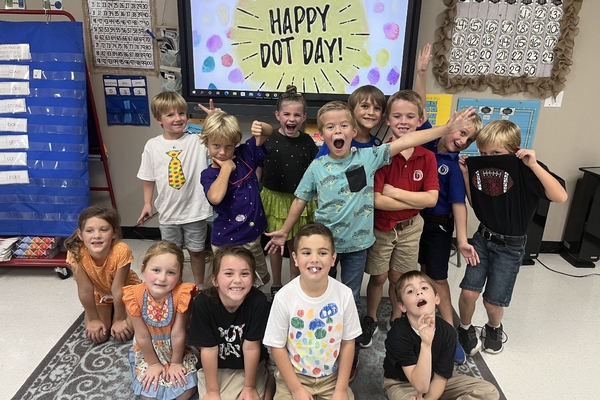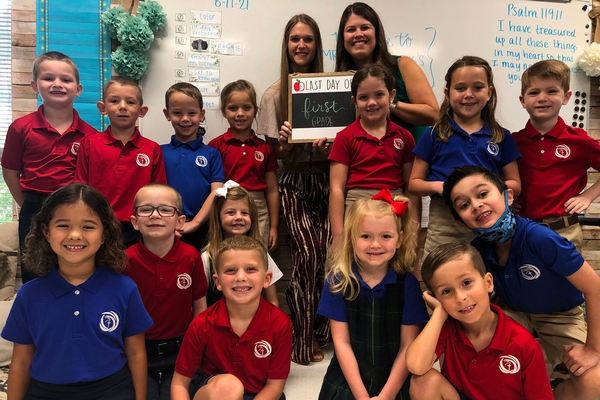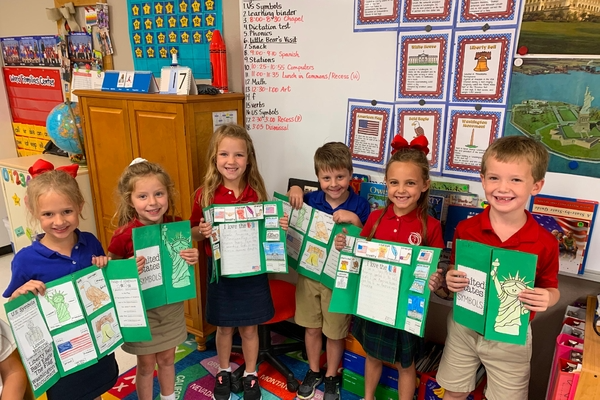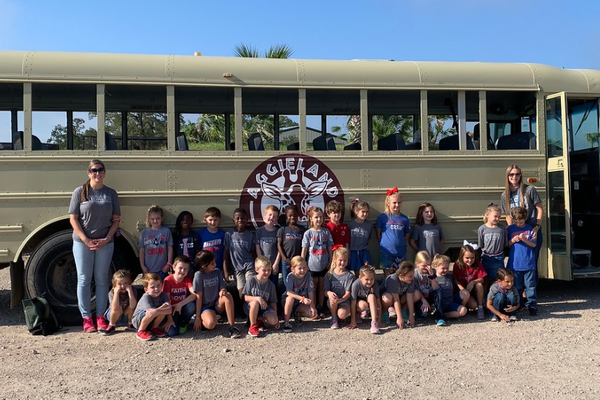First Grade Course Of Study
English Language Arts and Reading
Students will use the Purposeful Design Publications’ Language Arts series to study all the different components of English Language Arts and Reading. Because the series integrates Biblical values, spiritual growth results as students are enriched by meaningful classroom dialogue, centered around skillfully developed questions that grapple with real-life issues.
The series incorporates comprehensive components: research based phonics instruction, implicit and explicit vocabulary instruction, systematic spelling instruction, integrated grammar and writing instruction, engaging literature, and a comprehensive reading program.
The reading component knits together guided, shared, and independent reading with inspiring literature to meet rigorous national literacy standards. This multimodal reading program provides systematic instruction in phonemic awareness, phonics, reading fluency, vocabulary, and reading comprehension, while building students’ knowledge of God’s wonderful world. The reading component also includes phonics-based decodable and leveled readers that provide a solid foundation for literacy while instilling the enjoyment of reading. The readers follow the phonics progression of the series and align with appropriate readability levels.
Using the Johnny Can Spell curriculum, students will learn the sounds of the 26 letters of the alphabet individually and in combination. These form 70 common written symbols. This combination of sound and symbol is called a phonogram. These 70 phonograms represent 42 speech sounds. Using these phonograms, the children are able to read and write words. Learning the sounds and symbol combinations and the generalizations that govern their use will help the student master the first steps of reading and spelling.
Heggerty will be used as a supplemental phonemic awareness component. Heggerty provides explicit, systematic instruction covering all phonological awareness skills. It also includes phoneme-grapheme connections. Students are provided with fun, hands-on learning opportunities through physical movement and tactile experiences.
Mathematics
Visual and manipulative learning strategies are used to deepen conceptual understanding from the enVision Math curriculum. Students use manipulatives to help grasp concepts such as adding, subtracting, comparing and ordering numbers, geometry, money, time, fractions, measurement, and graphs.
Science
First grade classes investigate the following units using StemScopes: Living and Nonliving, Animal Structures, Animal Life Cycles, Interdependency, Natural Resources, Soil, Bodies of Water, Seasons, Weather, Classifying Objects, Pushes and Pulls, and Changes From Heat.
History
First grade classes study Government, Citizenship, Authority Figures, American Symbols, Countries Around the World, Geography, Map Skills, the First Thanksgiving, Colonial Jobs, Influential Americans, Inventors, Goods and Services, Producers and Consumers, and Needs and Wants.
Bible
The first graders have a daily Bible study using the Positive Action Bible curriculum. This includes a Bible lesson, prayer, and memory verses. The Bible stories learned come from both the Old and New Testaments. Students each have their own Christian Standard Bible.
Field Trips
Field trips in first grade include: Aggieland Safari, Barrington Farms at Washington on the Brazos, Service Project at the Parc Retirement Home, Virtual Field Trip to NASA, the Chocolate Gallery, and Blue Bell Creamery.
Computer
During once a week 30-minute sessions, first graders will practice working online, exploring websites and games, and learning technology skills while focusing on digital citizenship. Students will sharpen computer navigation skills through the use of www.abcya.com. They will also begin to learn basic keyboarding and how to associate hands and fingers with letters on the keyboard using Typing Club. First graders will also be introduced to coding and robotics and practice those skills using Sphero Indi, Code and Go Mouse and Beebot. All students will learn Digital Citizenship throughout the year and practice applying Christian principles and a Biblical worldview in the digital world.
Art
The goal of Visual Arts in the first grade art curriculum is to lay a firm foundation for the development of individual creative potential. Additionally, students will develop and sharpen observation and problem-solving skills through the exploration of a wide variety of art media with an emphasis on God’s elements of design, which include Line, Shape, Color, Value, Form, Texture, and Space. Also, students begin exploring the fine arts through the study of artists past and present and learn to apply design techniques to their own inspired artwork. Throughout the year each student will have opportunities to create a variety of both two-dimensional and three-dimensional art pieces.
Music
Students explore the musical world by singing, playing instruments, creating, and listening. Movement and play are key elements of the child-centered curriculum informed by the philosophies and practices of Orff, Kodály, and Dalcroze. Keyword: synthesis. Students will sing in several programs throughout the year which include the Christmas play, Grandparents Day,In His Steps and weekly in chapel.
Library
Students will be introduced to many different authors, illustrators, and a variety of literary genres. Activities include Author visits, guest readers and a variety of school wide reading events.
P.E.
Students will explore motor skills and movement patterns using an integrated curriculum. They will learn responsible personal and social behavior in a variety of physical activity settings. They will be provided frequent and diverse opportunities to engage in physical activities necessary to support a healthy mind and body. Students attend P.E. four times a week for 30 minutes each class. At least one day per week will be dedicated to our "Eagle Running Program," a self-paced activity specifically focused on improving cardiovascular fitness.
Chapel
Grammar School students enjoy Chapel once a week in two sessions: PreK through second grades and third through sixth grades. In order to study and apply meaning, the yearly school-wide Scripture is divided into sections for each month. In Chapel, Grammar School worships in song, Scripture, and prayer, followed by a special speaker who teaches the specific passage in a developmentally appropriate way. Our speakers include local pastors, children’s ministers, youth leaders, Christian camp directors, parents, and BCS teachers, staff, and administrators. All would agree that Chapel is the favorite time of the week.
Recess
Students have the opportunity to learn socialization skills through play and free activities outdoors. Lunch recess occurs after students are dismissed after eating and generally is 10-15 minutes per day. In addition, students enjoy a 20-30 minute recess daily.






